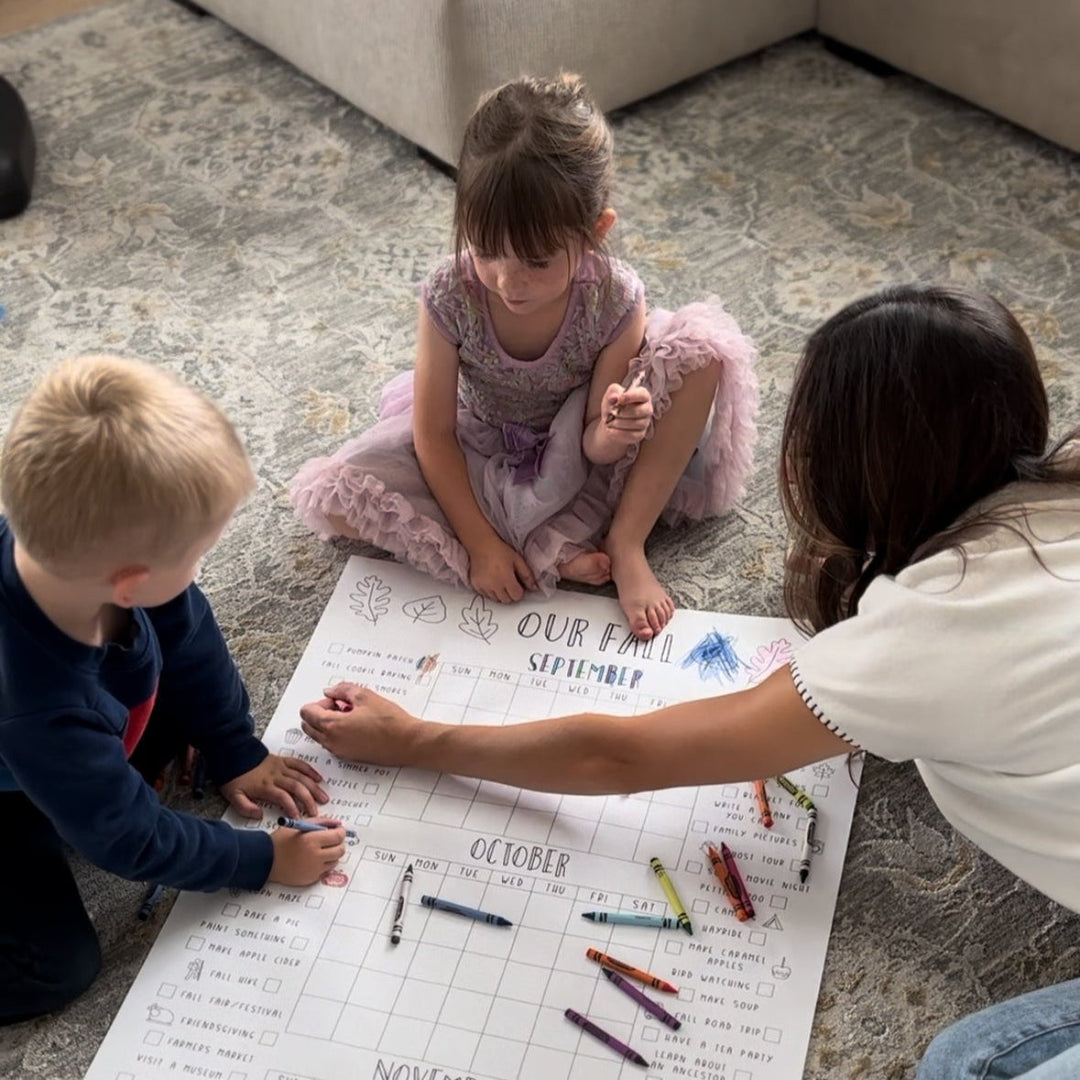How to Make a Chore Chart for Kids
Giving children responsibilities is a great way to empower them, build their confidence, and allow them to contribute to the family.
A good chore chart takes the guesswork out of responsibilities, creates consistency, and (most importantly) keeps you from having to remind your kids every five minutes. It helps them learn accountability, time management, and the satisfaction of a job well done.
If your child hasn't participated in family chores previously, you're probably wondering where to start!
How to Set Up a Chore Chart That Sticks
-
Make It Age-Appropriate
Toddlers can help pick up toys, while older kids can handle setting the table or vacuuming. Assign tasks that fit your child’s abilities. -
Keep It Visible
Place the chart somewhere your kids can easily see it, like the fridge or a family command center. Our customizable dry-erase chore charts make it easy to track progress and adjust tasks as needed. -
Use Positive Reinforcement
Praise goes a long way! Instead of focusing on what wasn’t done, celebrate the tasks they complete. Stickers, small rewards, or extra playtime can also boost motivation. -
Let Them Have a Say
Give kids some choice in their chores so they feel more in control. Letting them pick from a list of tasks can make them more willing to participate. -
Make It Fun
Turn chores into a game—set a timer for a “clean-up race” or play music while tidying up. The more enjoyable it is, the more likely kids will engage.
Chores for Kids by Age
First, be sure to choose age-appropriate tasks for your child. While you wouldn't have a toddler doing their laundry, small children are capable of far more than we sometimes give them credit for! In the case of your toddler, you could assign them the task of making sure their dirty clothes go in their laundry basket each night. An older child could bring their laundry basket to the laundry room and help load the clothes in. Over time, and as is appropriate, they can take on more responsibility.
A few chore ideas for kids by age:
18 months - 2 years:
- Putting laundry in a laundry basket
- Throwing away dirty diapers
- Putting away plastic cups or silverware (if it's in an accessible place)
- Putting away toys in a bin or bucket
2 - 3 years:
- Sweeping (have you ever seen a tiny child's broom? Adorable).
- Dusting (kids love feather dusters!)
- Emptying their plates and cups from the dishwasher
4-5 years:
- Unloading silverware and other accessible items from the dishwasher
- Sorting laundry and folding basic items
- Picking up toys, games, and activities
- Wiping down surfaces with a rag
Remember- the goal is not perfection! You are teaching them skills they will continue to practice and improve as they get older. You can offer correction and re-teach them as needed, but also probably need to accept that it's not going to be as clean as if an adult were to do the same task.
Use Visual Cues

Visual cues are your friend!! Adults need reminders on their phones, stickie notes, and reminder texts- why should children be any different? A visual cue like a chore chart is a fantastic way to help kids keep track of their assignments. You can choose how to split it up - whether they have daily or weekly tasks and how often they need to be completed.
Keep things low and accessible for them - hang the chart where they will regularly see it every day, and keep markers nearby to easily mark off their completed chores (or use our chore stickies!).
For little ones who can't read yet, try a toddler chore chart! These stickies are larger for small hands to use and your toddler moves them from "to-do" to "done" after they have finished.
A Tip for Recurring Chores

If you have chores that need to be done each week, you can write them in Sharpie on your chore chart. That way, everything else will be erased, but that chore will stay. If you need to remove the permanent marker, use a small amount of isopropyl alcohol and a soft cloth to wipe it away.
Consistency is Key
Don't worry if it takes a while to find your groove with a chore chart for your kids. Every child is different, and you might need to adjust things slightly for your child. The most important part is to be consistent in using the chore chart and offering plenty of positive feedback when your child accomplishes their tasks!




Leave a comment